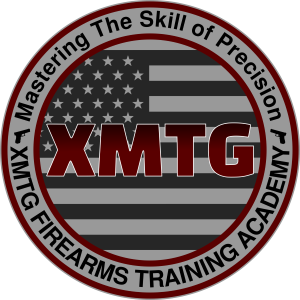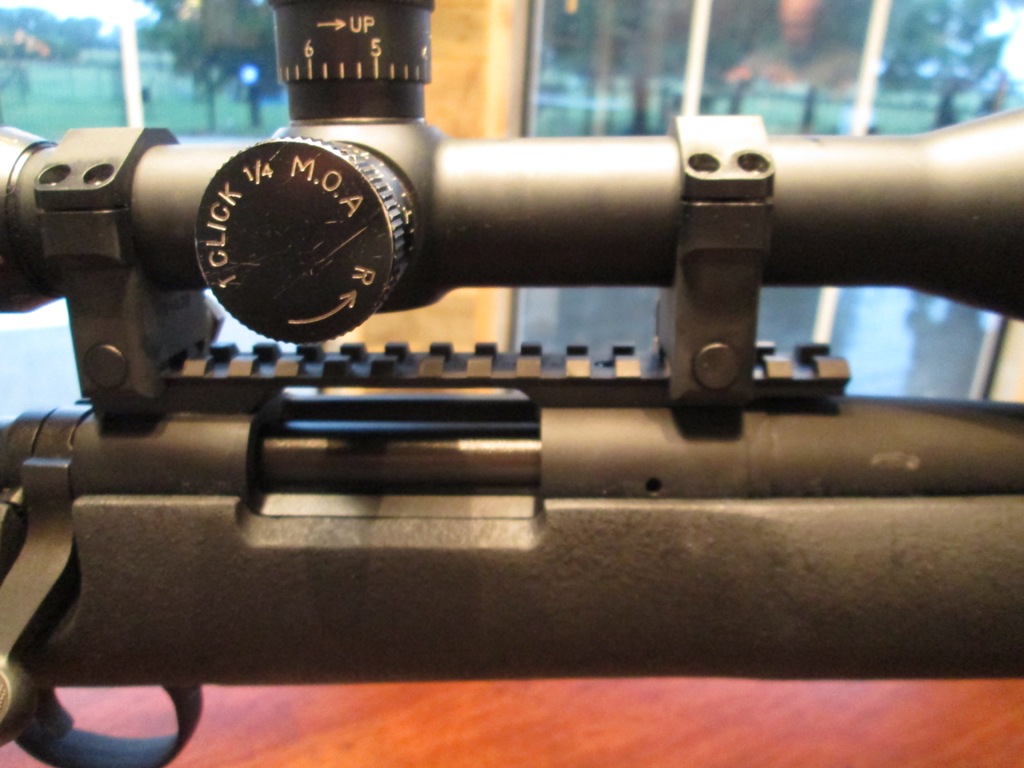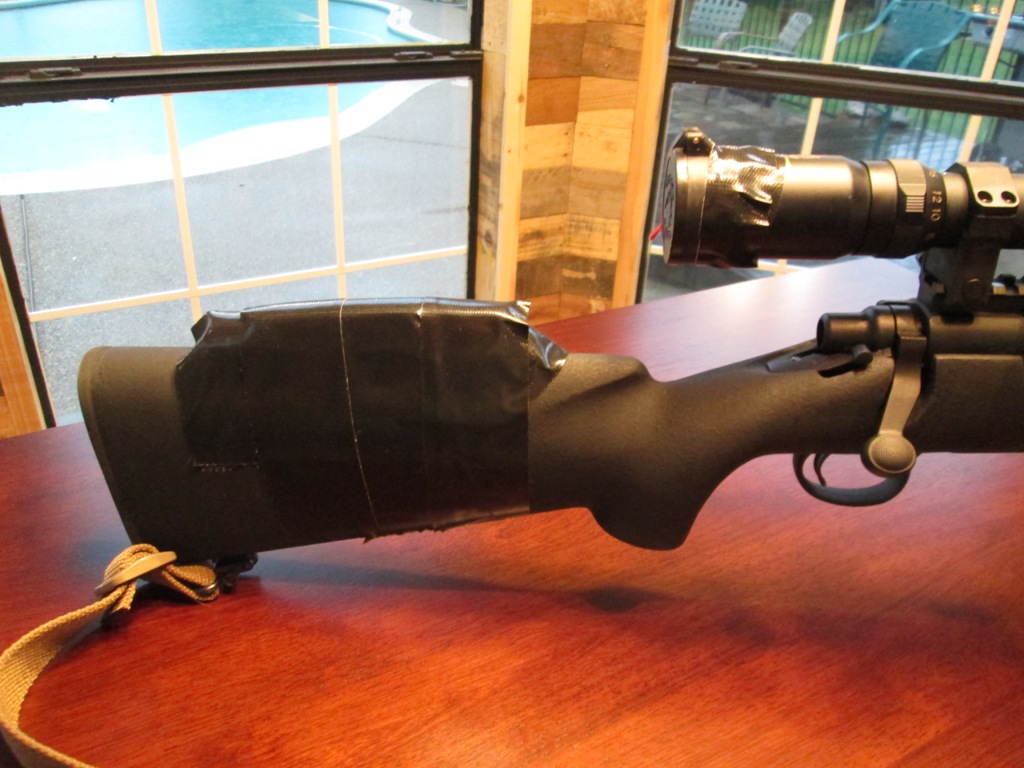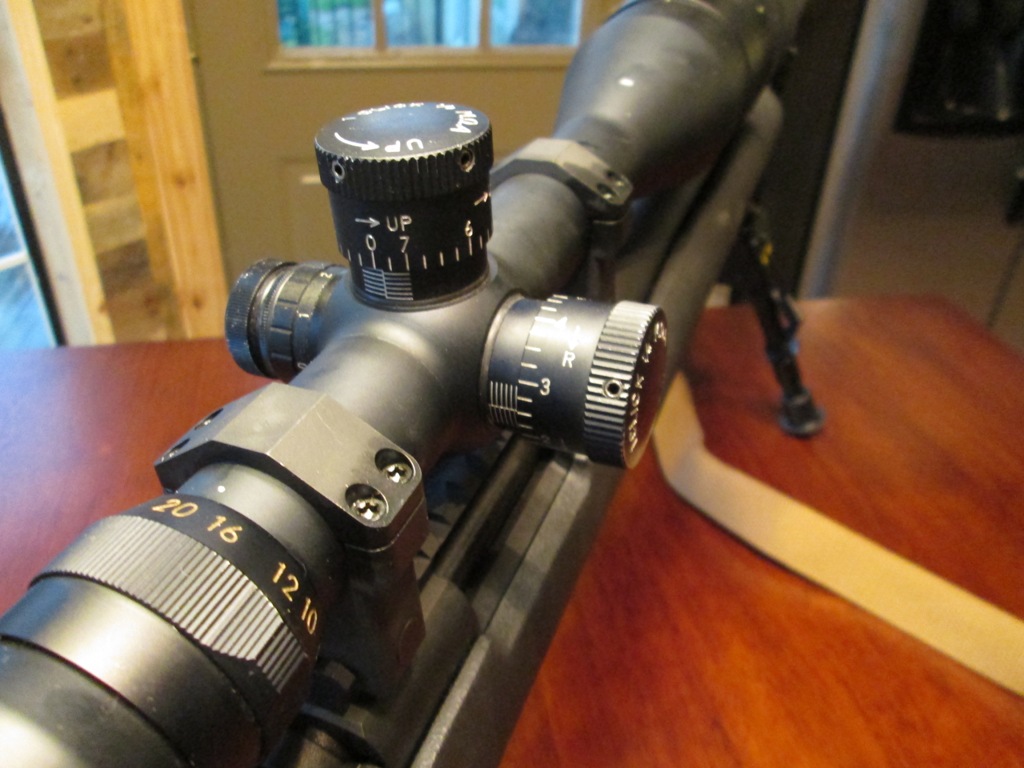This past weekend we set up my son’s new Remington 700P rifle so he will be ready to shoot in our upcoming Precision Rifle 1 class. We cover this topic in the class but since everyone cannot attend the class I thought I would share it with you here on our Blog.
Before you can be an accurate long range shooter you need to have the right equipment and that equipment needs to be set up right. I like to consider rifle set up as the foundation to precision rifle shooting. There are a lot of small differences in what some people do when setting up their rifles. Below is the process that has worked for me.
Once you have your quality equipment you need to mount the scope base to your rifle. In this project we were using a Badger Ordinance 20 MOA base for a Remington 700 short action. Mount the base with the provided screws and be sure to read the instructions. One screw is shorter than the others and it MUST be in a specific location. Put some type of thread locking material on the screws to prevent them from working loose during recoil. Be sure you are not using the permanent thread lock material. Torque the small bolts to 16 inch pounds. If you do not have a toque wrench that will go that low, tighten them to finger tight using the short end of the allen wrench as the handle. DO NOT use the long end as the handle or you will strip the screw or break it. Trust me; I learned that the hard way many years ago.
Once the base is mounted to the rifle you need to mount the scope rings. We were using the Badger Ordinance 30mm high rings due to our optic having a 56mm objective lens. The 56mm lens would not clear the barrel with the Badger standard height rings. When you place the rings on the base, slide them to the front of the notch in the base and torque the bolts to 65 inch pounds. If you place the rings in the back of the notch, under recoil the inertia generated from the recoil will cause the scope and rings to slide forward over time and this will affect your accuracy.
After you torque the rings in place insert the scope into the rings. Install the top section of the rings and the bolts. Leave the bolts loose enough that the scope will move in the rings. Have your shooter get on the gun in a prone position as low as possible. If you have a variable power optic, set the optic to its highest power. Adjust the optic until the shooter does not see any scope shadow in the optic. At this point if your shooter can not see through the optic, you will need to build up the cheek piece so the shooter can see through the optic as they are lying relaxed on the gun. Once the shooter can see through the optic without raising their head and there is no scope shadow visible it is time to level the optic.
Once you have the optic leveled in the rings tighten the ring bolts to 16 inch pounds. Be sure and use some type of thread locking material on the threads to keep them from backing out under recoil. Take care while tightening the ring bolts not to rotate the optic out of level.
The final step is to focus the reticle to the shooter. With your shooter behind the gun, hold up a white piece of paper about two inches in front of the objective lens. Have the shooter close their eyes and then open them. They should immediately tell you if the cross hair is clear or blurry. If the cross hair is blurry rotate the focus ring on the ocular lens several revolutions. Have the shooter repeat the process until they see a clear optic. Remember the shooter must tell you immediately after they open their eye if the reticle is clear or blurry. If they do not, their eye will focus on the reticle and it will appear clear every time.
It has been my experience that if you have high quality rings that lapping them is not necessary. If this is something that you feel you need to do to your rings, then lap them. You must be fully confident in how your rifle is set up. This entire process should take you about 30 minutes if you have all the proper tools. I hope this information will help you set up your rifle and move you one step closer to being an accurate long range shooter.









You must be logged in to post a comment.